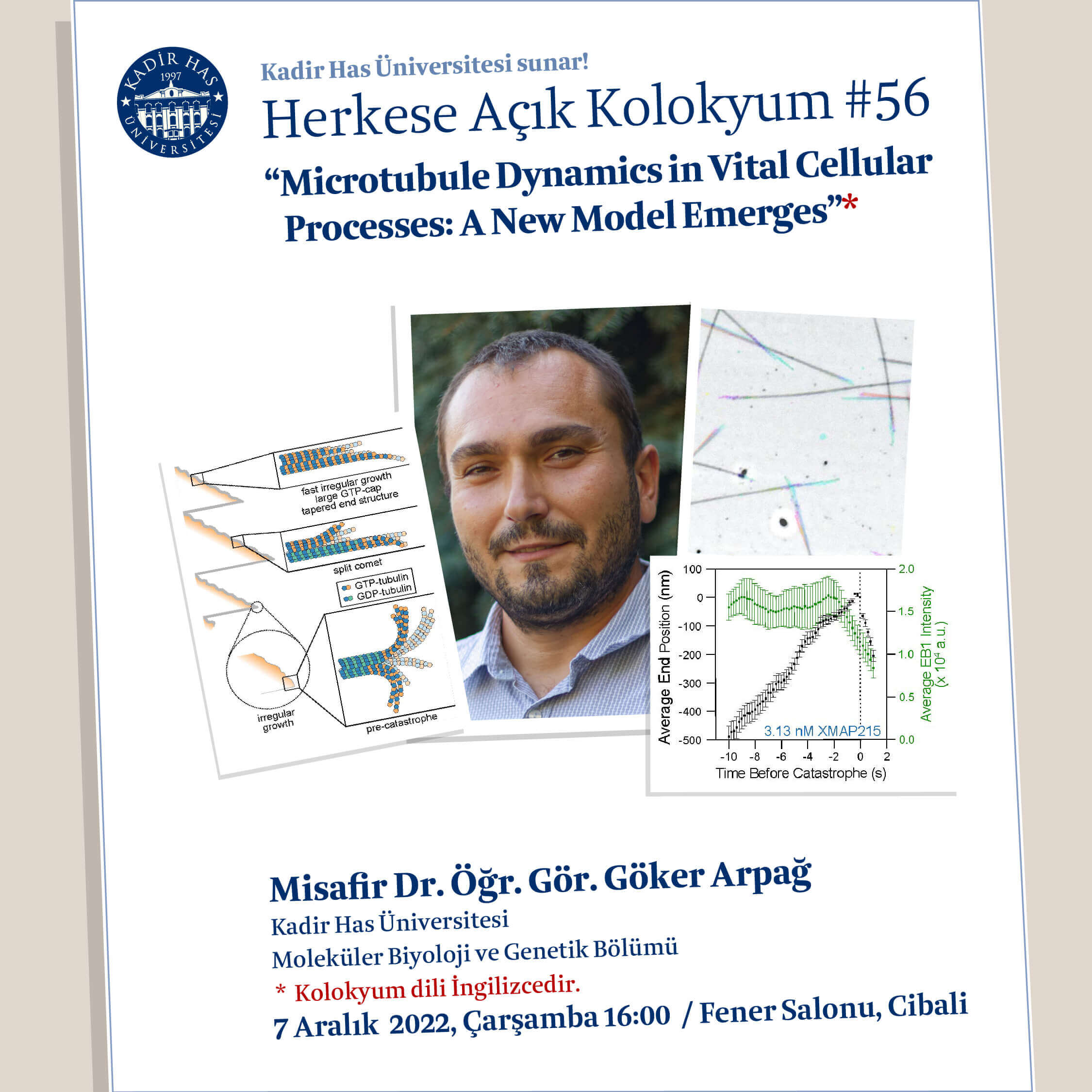
KHAS Public Colloquium #56: Dr. Göker Arpağ
In the 56th event of KHAS Public Colloquium series, the guest will be Dr. Göker Arpağ from KHAS Molecular Biology and Genetics Department on Wednesday, December 7 at 4:00 pm with his speech titled “Microtubule Dynamics in Vital Cellular Processes: A New Model Emerges”.
You may follow the event at Fener Hall. The event will be in English.
Abstract: Microtubules are self-assembling cytoskeletal filaments that play essential roles in vital cellular processes, such as supporting cell shape, segregating chromosomes during cell division, and providing tracks for intracellular transport. Dynamic remodeling of the microtubule network is essential for microtubules to fulfill such distinct roles. Microtubules polymerize by the addition of GTP-bound tubulin dimers at the polymer ends. Tubulin addition is followed by GTP hydrolysis which drives a conformational change in tubulin, rendering the lattice composed of GDP-bound tubulin unstable. The lag between dimer addition and hydrolysis results in a protective “GTP-cap” at the end of a polymerizing microtubule. The “standard model” of microtubule dynamics suggests that the loss of the GTP-cap at microtubule ends triggers depolymerization, known as catastrophe. In the perspective of this model, the GTP-cap is the sole determinant of the microtubule stability. It is well-established that increasing tubulin concentration increases the microtubule growth rate and size of the GTP- cap, and coincides with a reduction in catastrophe frequency, supporting the standard model. However, our recent work showed that the addition of microtubule polymerase XMAP215 increases catastrophe frequency despite promoting fast polymerization rates and larger GTP-caps. Moreover, results from our previous studies also challenge this standard model: CLASP proteins do not change the microtubule polymerization rate and the size of the cap yet suppresses catastrophes. The inherent stability of microtubule minus ends are not due to the size of the cap when compared to highly dynamic microtubule plus ends. Recent studies from other groups likewise challenge this standard cap model. Thus, a new perspective in the field is emerging regarding the underlying mechanisms of the microtubule dynamics.
Bio: Dr. Göker Arpağ obtained his B.S. degree in Physics Engineering from İstanbul Technical University in 2011 and his Ph.D. degree in Physics from Worcester Polytechnic Institute in 2016. Although trained as a physicist, Göker’s research has been intersecting with biology. At İTÜ, he worked on developing statistical and computational methods to study miRNA-mRNA pairing. His strong interest in biophysical research on cytoskeleton and its associated proteins started in graduate school. During his Ph.D. work, he developed computational models studying kinesin motility and cargo transport, and force generation by myosins. After graduating, Göker joined Dr. Marija Zanic’s laboratory for his postdoctoral training to obtain hands-on experience on biochemical in vitro reconstitution using purified protein components and fluorescent microscopy. He used multidisciplinary approaches to study microtubule dynamics and its regulation. Göker joined Kadir Has University in September 2022 and is establishing his independent lab. His research interests are to elucidate fundamental biophysical principles underlying dynamic evolution of microtubule cytoskeleton and microtubule-based transport driven by molecular motors. He is planning to conduct his research using both computational and experimental approaches, while increasing the complexity of the minimal-component bottom-up reconstitution systems.
